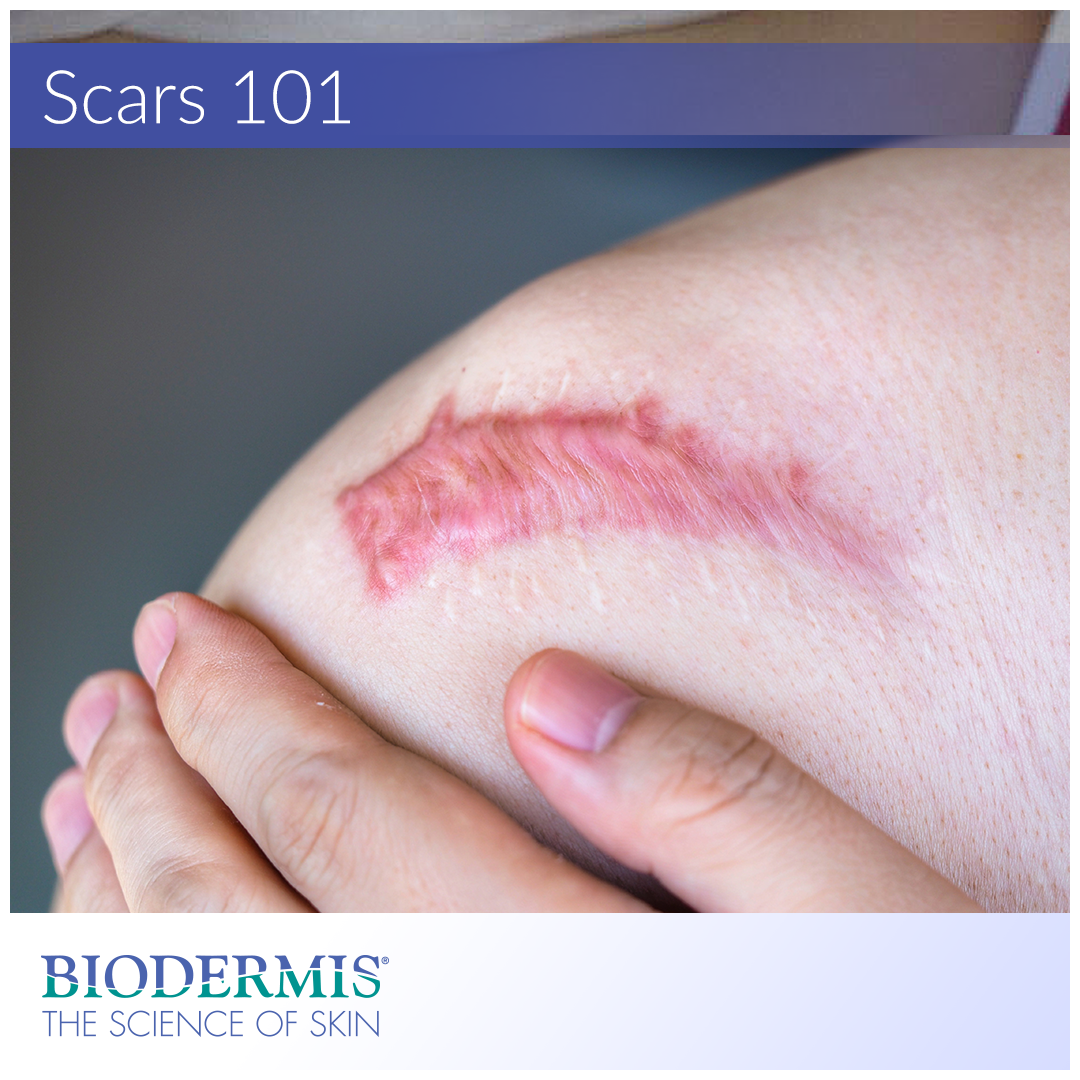Scars occur when there has been any form of trauma to the skin. There are several types of scars, and the most common ones will be listed below. During the healing process of any scar, it is important to remain patient and non-critical of its appearance. At Biodermis we offer several different scar care products that can be used on any closed scar. This can be a recently healed scar, or a scar that has been healed for years. All of our products contain one main ingredient which is medical grade silicone. Our products can be found in sheeting configurations, in a stick, or as an ointment.
When placed on a scar our medical grade silicone internally signals to the body and lets it know to stop producing excess amounts of collagen to the scar. It is the excess amount of collagen which is what ultimately creates the scar and hinders the non- scar healing process. With scars it is important to know that without the initial process of excess collagen being sent to the scar it would take much longer for the wound to close. The body NEEDS the excess amount of collagen in the beginning stages of the healing process to close the wound. After the wound is healed is when the body no longer needs the extra collagen. However, our body is still aware that the trauma to the skin is still there and continues to produce collagen to that same area even when that trauma site is now closed.
How do our products help the appearance of scars? Our medical grade silicone helps the body to recognize that the trauma site is now closed and in turn the body will stop sending excess amounts of collagen to the scar. Using our products for roughly 8-12 weeks will ensure that the body will stop providing the excess amount of collagen to that scar site and results of this will be a less noticeable scar!
- Normal Scars: These are the typical scars that form as part of the body's natural healing process. They may initially appear red or pink, but gradually fade to a paler color over time.
- Hypertrophic Scars: These scars are raised and thicker than normal scars. They may be red or pink and can be itchy or painful. Hypertrophic scars remain within the boundaries of the original wound and generally improve over time.
- Keloid Scars: Similar to hypertrophic scars, keloid scars are raised and thick. However, keloids extend beyond the boundaries of the original wound and can continue to grow over time. They may be darker than the surrounding skin and can be itchy, painful, or tender.
- Atrophic Scars: These scars result from a loss of tissue and appear depressed or sunken into the skin. They are often associated with conditions like acne or chickenpox.
- Acne Scars: Acne scars can be either atrophic or hypertrophic, depending on how the skin responds to the healing process after severe acne. They often appear as pitted or raised areas on the skin.
- Contracture Scars: These scars occur when the skin tightens and contracts during healing, often resulting from burns. Contracture scars can restrict movement and affect adjacent tissues.
- Stretch Marks (Striae): These are a type of scar that forms when the skin stretches rapidly, such as during pregnancy, growth spurts, or rapid weight gain. They appear as streaks on the skin and are often lighter or darker than the surrounding skin.
- Surgical Scars: These scars result from surgical incisions and can vary in appearance depending on the type of surgery and the individual's healing process.
- Traumatic Scars: Scars that result from accidents, injuries, or trauma to the skin fall into this category. The appearance and characteristics of traumatic scars can vary widely.
- Burn Scars: Burns can cause a variety of scars, including hypertrophic, atrophic, or contracture scars, depending on the severity of the burn and how it heals.
- Post-inflammatory Hyperpigmentation (PIH): While not a scar in the traditional sense, PIH occurs after inflammation or injury to the skin, often as a result of acne or other skin conditions. It appears as darker spots on the skin and can fade over time.
- Article contributed by Riona Scafa





